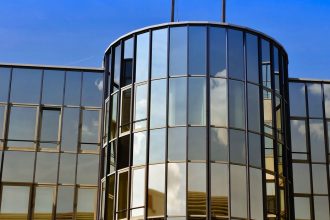As the world grapples with the pressing challenges of climate change, resource depletion, and environmental degradation, the real estate industry is undergoing a significant transformation towards sustainability. The rise of eco-friendly real estate and sustainable development practices marks a crucial shift in how we design, build, and inhabit our spaces. At the forefront of this movement are innovative practices in green building design, with initiatives like the Living Building Challenge serving as benchmarks for excellence.
The Emergence of Eco-Friendly Real Estate
Eco-friendly real estate refers to properties designed with consideration for their environmental impact throughout their lifecycle—from construction to operation and beyond. This trend has been driven by growing awareness among consumers and developers of the environmental footprint of traditional construction practices. Factors such as energy consumption, waste generation, and the depletion of natural resources have led to a collective push for more responsible building practices.
Key Drivers of Change:
-
Regulatory Pressure: Governments around the globe are implementing stricter regulations on energy efficiency and emissions, compelling developers to adopt sustainable practices.
-
Market Demand: A significant number of buyers and renters now prioritize sustainability, leading to increased demand for eco-friendly buildings. Studies show that properties with green certifications often command higher prices and faster sales/rental times.
-
Corporate Responsibility: Many companies recognize the importance of sustainability for branding and social responsibility. They are increasingly opting for green office spaces to attract environmentally conscious employees.
- Technological Advancements: Advances in building materials and construction techniques have made it easier and more cost-effective to achieve sustainability goals.
Innovative Practices in Green Building Design
1. Energy Efficiency and Renewable Energy Integration
One of the cornerstones of sustainable real estate development is energy efficiency. Modern buildings are increasingly designed to reduce energy consumption through advanced insulation, high-performance windows, and energy-efficient HVAC systems. Additionally, the use of renewable energy sources such as solar panels and wind turbines has become prevalent. Buildings like the Bullitt Center in Seattle — often referred to as the greenest commercial building in the world — are perfect examples, with a net-zero energy goal achieved through energy-efficient design and on-site solar power generation.
2. Water Management Systems
Sustainable buildings also focus on responsible water use and management. Features such as rainwater harvesting systems, greywater recycling, and permeable paving significantly enhance water efficiency. The Living Building Challenge, which is a rigorous certification program for sustainable building, emphasizes optimal water stewardship—encouraging buildings to be net-positive in water usage by sourcing all their water needs from rainfall or other sustainable means.
3. Sustainable Materials and Construction Practices
The use of sustainable, locally sourced materials is critical in reducing the carbon footprint associated with transportation and production. Developers are increasingly opting for reclaimed wood, recycled steel, and non-toxic materials to minimize environmental impact. Innovations such as 3D printing of building components from sustainable materials are expected to revolutionize the construction industry.
4. Indoor Environmental Quality
Sustainable buildings aim not only to reduce their external environmental impact but also to enhance the internal environment for occupants. This includes ensuring quality indoor air through proper ventilation systems and the use of low-VOC (volatile organic compound) materials that improve indoor air quality. Natural light maximization and green spaces — such as living walls and rooftop gardens — also contribute to healthier environments and increased occupant well-being.
5. Smart Building Technologies
The integration of smart technologies into building management systems plays a vital role in energy conservation and efficiency. Smart thermostats, occupancy sensors, and automated lighting systems optimize resource use, reduce waste, and lower operational costs. These technologies can monitor and adjust energy consumption in real-time, providing valuable data that helps in making informed operational decisions.
The Living Building Challenge: A Benchmark for Sustainability
The Living Building Challenge (LBC) is one of the most ambitious certifications for sustainable building and design. Established by the International Living Future Institute, the LBC aims to create buildings that function like natural ecosystems. Certification is based on several performance areas, including:
- Place: The project must be built in harmony with its environment and consider ecological impacts.
- Water: Buildings must achieve net-positive water usage, meaning they can collect and treat all the water they need on-site.
- Energy: Energy consumption should be net-positive, utilizing renewable sources to produce more energy than consumed.
- Health and Happiness: Focus on creating environments that foster the health and well-being of occupants.
- Materials: The use of harmful materials is strictly prohibited, ensuring that all building materials are safe and sourced sustainably.
Projects like the Omega Center for Sustainable Living in New York and the
Edmonton’s Canada Place have achieved LBC certification, serving as model examples of living buildings that exemplify sustainability, resilience, and innovation.
Conclusion
The rise of eco-friendly real estate and sustainable development signifies a paradigm shift in how we conceptualize and build the spaces we inhabit. As we face mounting environmental challenges, the industry’s commitment to innovative practices—supported by rigorous standards like the Living Building Challenge—illustrates a promising future. The journey towards a sustainable real estate landscape is not without its challenges, but the growing recognition of the importance of ecological stewardship in our built environment is a powerful catalyst for change. By prioritizing sustainability, the real estate sector can lead the way in creating healthier, more resilient communities while preserving our planet for future generations.







